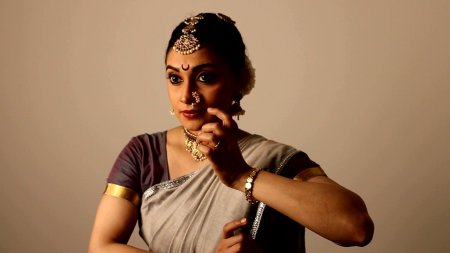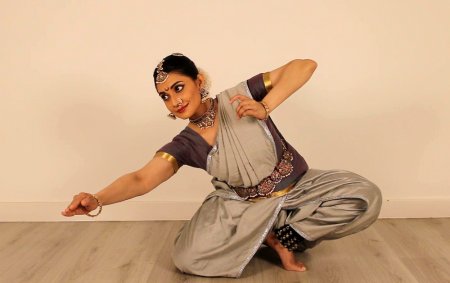
|   |

|   |
 e-mail: ukb7@rediffmail.com Surrender to the Supreme July 24, 2021 Spirituality and sensuality (with/without opulent living) have seldom been the attributes of the same person, although honourable exceptions are known in history. In the Buddhist annals occur Amrapali, recognized as Nagarabadhu (royal courtesan), who lived rolling in luxury and lucre in Vaishali in the Buddha's time in the late 5th century BC. Yet, having been highly influenced by one of the Buddha's last discourses, she had invited him along with his entourage to her grand palace for a meal and offered herself, along with all her wealth, to become a Bikshuni (Buddhist monk), dedicating her remaining life to serve the poor and the distressed. Some years later, Ajatasatru was a Magadha king of Haryanka dynasty, destroying the Buddha's stupa inside the palace due to his hostility to Buddhism. Yet, we find the palace dancer Shrimati taking upon herself - to the consternation of the queens and princesses -- the dangerous task of offering the evening worship. She finally gave up her life at the hands of the palace guards. After the Buddha's demise, we find Vasavadutta, also a Nagarabadhu of Mathura city who, during a nocturnal love tryst, stumbled upon a sleeping monk Upagupta. The dancer offered her own lavish hospitality to the monk, only to be politely declined. Later, when suffering from the deadly small pox and discarded by society, she was rescued by Upagupta for treatment and cure. Vasavadutta became a Buddhist disciple. In historic periods, we see emergence of great women literary figures, who turned inwards for divine inspiration. Andaal, found left as a baby in a basil garden, became a top Alwar (Vaishnavite) poet devoting her entire life to Vishnu in the 7th - 8th century. Her great Tamil epics, Thiruppavai and Nachiar Tirumozhi, are still recited by devotees during the winter festival season of Margazhi. There is Lal Ded, also known as Laleshwari, a Kashmiri mystic, who professed Shaivaite philosophy in the 15th century. Creator of the style of Vakh (mystic poetry, from Sanskrit Vaak), she was perhaps the earliest poet in Kashmiri language with her Lal Vakh forming a significant part of their literature and used even by Sufi philosophy. We know of Mirabai, a Rajasthani queen and a cherished figure in the Bhakti movement culture in the 16th century. Most stories about Mirabai mention her fearless disregard for social and family conventions, her devotion to Krishna, her treating Krishna as her husband and her being persecuted within the palace for her religious devotion. She moved to Dwarka in her later life, leaving a corpus of devotional songs that have been legendary. Many women saints of Maharashtra, unlike Mirabai, did not declare a passionate love for Krishna, nor was there a rejection of marriage. Instead, they sang about their difficult daily existence, family chores at home, married life and finding freedom amidst it. Until the 20th century, Dalits were not allowed to enter temples, and had to pray while standing at a distance from the threshold. Many bhakti poets, both men and women, had sung against this injustice, and on occasions, the temple was transformed into a site of miracles, as obstructing statues or pillars were said to have providentially shifted to provide an unimpeded view of the deity to the 'untouchable' devotee. Since women saint-poets like Soyarabai spoke about their hardships of perpetual discrimination, there was also an urge to transform the non-egalitarian society. The women saints were part of the early feminism in India and their struggles and negotiations within their cultural context should be understood and reinterpreted as emancipatory cultural histories. Not only should their abhangs be considered as a source of social commentary of the times they lived in, but a precursor to the modern Dalit poetry.  Kanhopatra featured in the online Geeva Arts Festival 2021, is a digital work-in-progress of the UK-based Bharatanatyam dancer Divya Ravi, in collaboration with her musician husband, Dr. Sharan Subramanian. Observations of Divya, a senior and widely travelled artiste, about Kanhopatra are revealing. "She was the daughter of a courtesan in the 15th century, who refused to follow her mother's path of luxury. She remained a solitary woman to have treaded the path of enlightenment uninstructed. Kanhopatra's matrilineal origin and her refusal to serve as an accessory to a male saintly figure, placed her at the periphery of our patriarchal society and she was habitually brushed off as insignificant by both scholars and laymen. An autonomous, solitary woman, unattested by androcentric norms, was a threat and hence ignored." Divya's recital - in sparkling Bharatanatyam, with an occasional touch of the Marathi folk form Lavani that goes very well with lighter moments - is to begin with, an amalgam of remorse and dejection, with a righteous self-deprecation of the bonded life of a dancing girl offering her flesh to the enjoyment of the rich and the affluent and marked by an indignant note of revolt from this thraldom. The Abhang, complaining to Vithala, Mhane Kanhopatra..., runs thus: Still up for grabs are the salvaged remains of this body that I entrusted with YOU! Oh Guardian of the downtrodden! How could you drown me in more humiliation? How could you accept my faith only to betray it? How could I go back to where I started as inheritor of Shyama's opulent lifestyle and legacy, singing, dancing and entertaining men? ... After an Alarippu with adavus, she remonstrates with her god with another Marathi Abhang, Vishayache...with philosophical reflections. Material desires and sensual pleasures lead one straight to ruins! Going after affluence is futile, but I had no choice. My sole respite was knowing that I could look into the ocean of your dark eyes, eyes with no ripples of discrimination for my birth, no storms of admonition for my actions, but only gentle waves of compassion reaching the shores of this unworthy woman... Another Abhang follows, Jeeviche Jeevalage. Now it is an ecstatic dance of dedication directly addressed to Vitthala. You are my mother, my Krishnai, my Kanhaai. You are my source, my means and my end. You are my everything. I could no longer bear to live without you, and so, leaving behind my turbulent existence, I fled Mangalvedha, so I could come home, to my maaher Pandharpur, my safe haven, where my divine parents reside - Rakumai Vitthoba. One glimpse of you rids me of all my worries and woes... In the spirit of surrender, Kanhopatra sings Majhe Maher and Vitthalcharan and dances on in exhilaration. When I surrendered at your feet, it wasn't merely my body. My mind and soul too, surrendered in unison. I decided then that I would never leave Pandharpur, and would forever remain by your side, singing and dancing for YOU alone, fervently speaking of your glory and chanting your name with every breath... Yet, there is summon from a king to become his concubine! The song takes on Jyache Gheta Mukhi...and the desperate lamentation follows. Another power wielding man has sent for me to be his concubine! Still up for grabs are the salvaged remains of this body that I entrusted to YOU, oh Guardian of the downtrodden! And yet, here we are! How could you drown this powerless and vulnerable body in more humiliation? I am yours alone! If I'm taken by another man, only you are to blame. If a jackal partakes of the share with the lion, only the lion is put to shame! The finale is a song Patit Paavan and the final resolution as well. I stand at the helm of life and death, mortality and eternity. I offer my body at your feet. Now protect it, at least for your title...The song rises to a crescendo, Mhane Kanhopatra...  The summing up of Kanhopatra's life is another striking narrative. "Steeped in ambivalence, the possibilities and multiplicities surrounding Kanhopatra's life and lore make her an enigma. The boundaries between saint and sinner, Sringara and Bhakti, the downtrodden and the privileged, and spiritual and sexual appear blurred in her persona. Was she sacred? Was she profane? Or did she symbolize the sacred in the profane and the profane in the sacred?" Poetry used in the programme were select verses from the Abhangs (and Ovis) composed by Saint Kanhopatra. They included Vishayache Sangati in raga Kalyanavasantham; Jeeviche Jeevalage in raga Kaapi; Majhe Maher Pandhari in raga Kalyani; Jyache Gheta Mukhi Naam in raga Abheri; Patit Paavan and title phrase Mhane Kanhopatra Deha Samarpane in raga Puryadhanashri. While research, script, choreography and performance were all by Divya Ravi, music composition, arrangement and vocals were by Dr. Sharan Subramanian. The entire presentation is an inspired piece of performance with an illuminating dedication and narrative skill. While the work-in-progress does elevate the sayings of a Dalit Marathi woman saint-poet -- virtually ignored by civil society -- into a spirited bout of song-and-dance, this critic would look forward to Divya's completed work, both from aesthetic and feminist points of view, to claim a much maligned gifted saint-poet her legitimate place in the modern, hopefully liberal age.  Dr. Utpal K Banerjee is a scholar-commentator on performing arts over last four decades. He has authored 23 books on Indian art and culture, and 10 on Tagore studies. He served IGNCA as National Project Director, was a Tagore Research Scholar and is recipient of Padma Shri. Responses * Enjoyed reading your perspectives on Bhakti poetry and how aptly they represent feminism that has been an important, yet ignored aspect of Indian history. I will definitely look forward to building this work, and hopeful of having your presence in the audience whenever I am able to take it on stage. - Divya Ravi (July 25, 2021) Post your comments Pl provide your name and email id along with your comment. All appropriate comments posted with name and email id in the blog will also be featured in the site. |